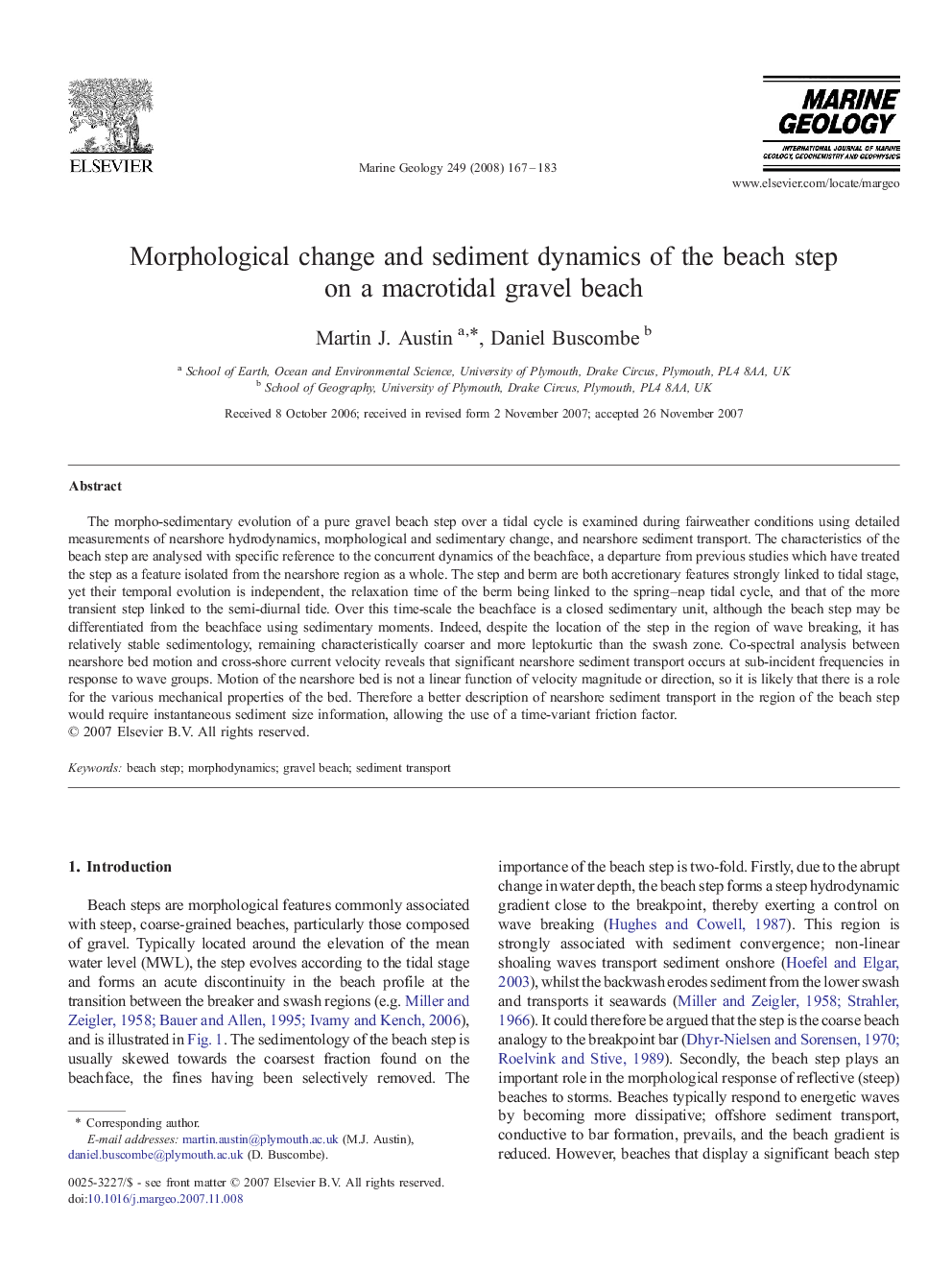| Article ID | Journal | Published Year | Pages | File Type |
|---|---|---|---|---|
| 4719334 | Marine Geology | 2008 | 17 Pages |
The morpho-sedimentary evolution of a pure gravel beach step over a tidal cycle is examined during fairweather conditions using detailed measurements of nearshore hydrodynamics, morphological and sedimentary change, and nearshore sediment transport. The characteristics of the beach step are analysed with specific reference to the concurrent dynamics of the beachface, a departure from previous studies which have treated the step as a feature isolated from the nearshore region as a whole. The step and berm are both accretionary features strongly linked to tidal stage, yet their temporal evolution is independent, the relaxation time of the berm being linked to the spring–neap tidal cycle, and that of the more transient step linked to the semi-diurnal tide. Over this time-scale the beachface is a closed sedimentary unit, although the beach step may be differentiated from the beachface using sedimentary moments. Indeed, despite the location of the step in the region of wave breaking, it has relatively stable sedimentology, remaining characteristically coarser and more leptokurtic than the swash zone. Co-spectral analysis between nearshore bed motion and cross-shore current velocity reveals that significant nearshore sediment transport occurs at sub-incident frequencies in response to wave groups. Motion of the nearshore bed is not a linear function of velocity magnitude or direction, so it is likely that there is a role for the various mechanical properties of the bed. Therefore a better description of nearshore sediment transport in the region of the beach step would require instantaneous sediment size information, allowing the use of a time-variant friction factor.
